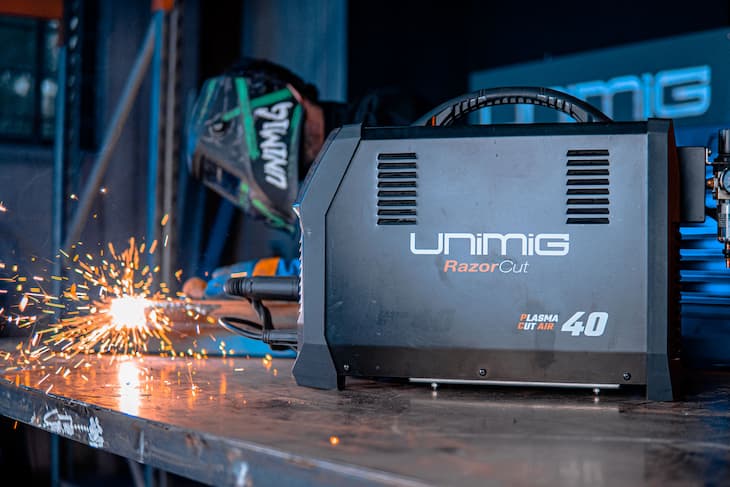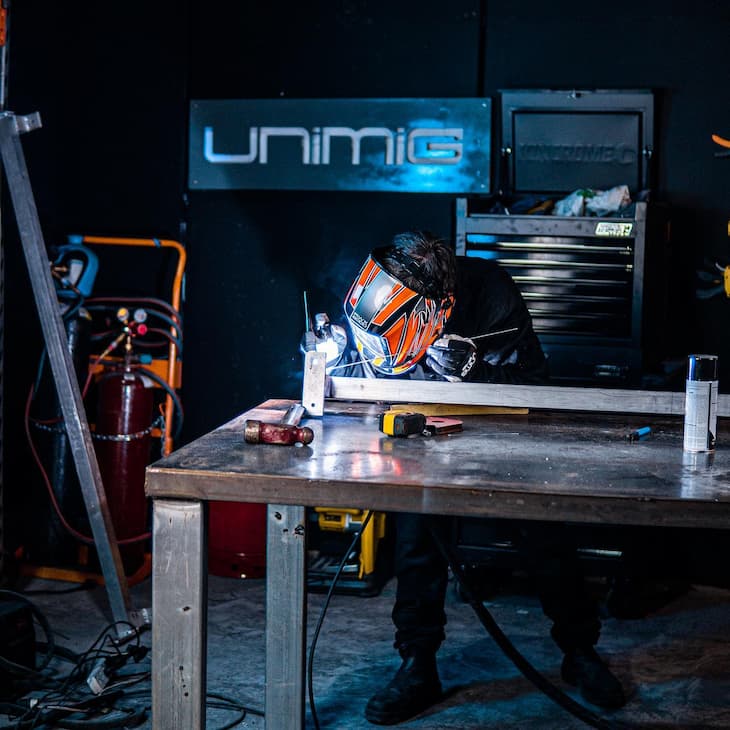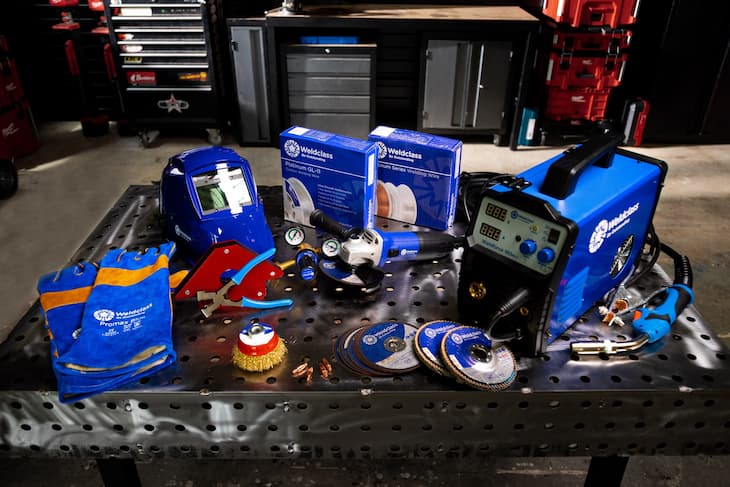If you’re just getting into welding, choosing your first welding machine can be one of the hardest decisions you’ll have to make. There are so many variables at play, that one single welder might not be appropriate for all the different welding processes, or the types of jobs you’ll encounter. There’s also quite a bit of mixing and matching to be done and pairing the right type of welder with the right metals, as well as the thickness of those metals.
The aim of welding is to get smooth, strong and well-done welds in the least amount of time. Some welders can be used across various metals and in different working conditions to get decent-looking welds, but better (and arguably, faster) results can be had with a different machine. What it all boils done to is the type of welding you’ll most commonly be doing, and the materials you’ll be working with.
Getting the Right Welder for the Right Welding Process

MIG, TIG and stick welding are undeniably the most common types of welding. MIG or Metal Inert Gas welding involves the use of a welding electrode fed from a spool and heated by the electric current from the welding machine to fuse the base metals. While the current creates the heat for the weld pool, an inert gas shields it from contaminants. The result is a strong, durable, and aesthetically pleasing weld. MIG welding is good for both thin and thick pieces of metals but is most commonly seen in steel, stainless steel and aluminium. Similar to MIG welding is FCAW or flux-cored welding, which does away with the inert gas but protects the weld pool by use of a flux-cored wire instead. This simplifies things, meaning it’s the preferred welding process outdoors, and where speed and efficiency are necessary. The welding machines used in both cases are the same.
TIG or Tungsten Inert Gas welding is a little different. It uses a non-consumable tungsten electrode, with the weld protected by a shielding gas, usually Argon. The filler rod may or needn’t form part of the weld. The benefits of TIG weld are the high level of precision, meaning cleaner and stronger welds, particularly in thinner pieces of non-ferrous metals, like aluminium, magnesium and copper alloys. Adjusting heat levels usually implies the use of AC or AC/DC polarity on the welder. Welding aluminium or magnesium requires a stable arc, achieved with a high-amperage machine capable of output.
Stick or Shielded Metal Arc Welding (SMAW) uses an electric current flowing from the workpiece and the electrode or ‘stick’. It’s been around for quite some time and is useful in welding thicker ferrous metal, particularly cast iron. It is also a versatile method of fusing metals both indoors and outdoors. The welding machines used here can create the arc using AC, DC, or AC/DC depending on the thickness of the materials, the needed penetration of the weld, the required arc stability, and the welding position. The downside of stick welding is the leftover spatter, but this can be controlled to a degree by opting for a welding machine that can maintain a stable DC current.
There are also multi-purpose welders, allowing welding in different metals and of different thicknesses. These can be complete MIG/TIG and stick welding machine combos. Or more often able to do a combination of two welding processes, such as MIG and stick or TIG and stick welding variants. While these machines do a fine job, they’re limited in overall usage compared to a dedicated welder. In addition, they come in as way more expensive. The upside is the versatility, with combination welders a good starting point for most novices, as they’re often bundled with all the necessary gear. apart from gas bottles.
Type and Thickness of the Materials

Choosing between a MIG, TIG, or stick welding machine then is all about how you plan to use them. Only TIG welding machines are appropriate for welding non-ferrous and exotic metals, such as titanium, as well as alloys like brass and Chromoly. They can also get good results in ferrous metals, albeit in thinner pieces such as auto panels, and at a slower rate. Steel, stainless steel alloys, and cast iron are fine with a stick welder, especially with thicker workpieces, but where there’s more precision involved, MIG welding machines are preferred.
Work Environments and Welders
Not all welding machines perform equally in adverse environments. Fluxed-core wired fed from a MIG welder is useful where gas cylinders pose a safety risk, such as in areas with high heat or in windy outdoor conditions where the flame will be harder to control. The same applies to stick welding as this uses the least amount of gear.
Features to Look for in a Welding Machine

Amperage and Cost
These two are siblings. The higher the output amperage, for example when welding carbon steel, the more expensive the welding machine. Again the power and amperage settings will be based on the type of metals you work with, As compared to carbon steel, stainless steel requires less heat and less amperage and can be welded with mid-tier machines in all types. Thickness also plays a part and thicker metals will need more juice to join. As a rule, every 0.025mm of metal needs about 1 amp, so welding a 2.5 mm piece will mean a machine capable of at least 100 amps of output. Machines averaging 150 amps or more are a good starting point for the majority of jobs. Those capable of 200 to 250 amps go for double the price.
Duty Cycles
This refers to the amount of time the welding machine can maintain a specified current (and stable arc) before it starts to overheat. This is given as a percentage of a 10-minute session. For example, a 240 amp welder with a 30 percent duty cycle can maintain that current for three minutes, before it needs 7 minutes to cool down, and another 10-minute cycle can begin. Machines don’t necessarily have to work at full output and dialling down the current (and heat) will mean longer welding. But this is not always possible, especially with thicker metals. Having the option of a longer duty cycle considerably speeds things up, and puts less stress on the welder.
Accessories and Additions
Welders rarely come bare, but consider what you’re getting. There are dozens of types of torches, spool guns, clamps, cables, and electrode types, not to mention accessories such as safety gear, cleaning and cutting tools, etc. Some items might only be adding to the overall cost, but not worth the expense. Other items might be missing, but necessary. Gas and gas bottles are another consideration. The welding machine is the centrepiece of any welding process but won’t add to much without the needed attachments and extras. Budget these in when buying your next welding machine.


















